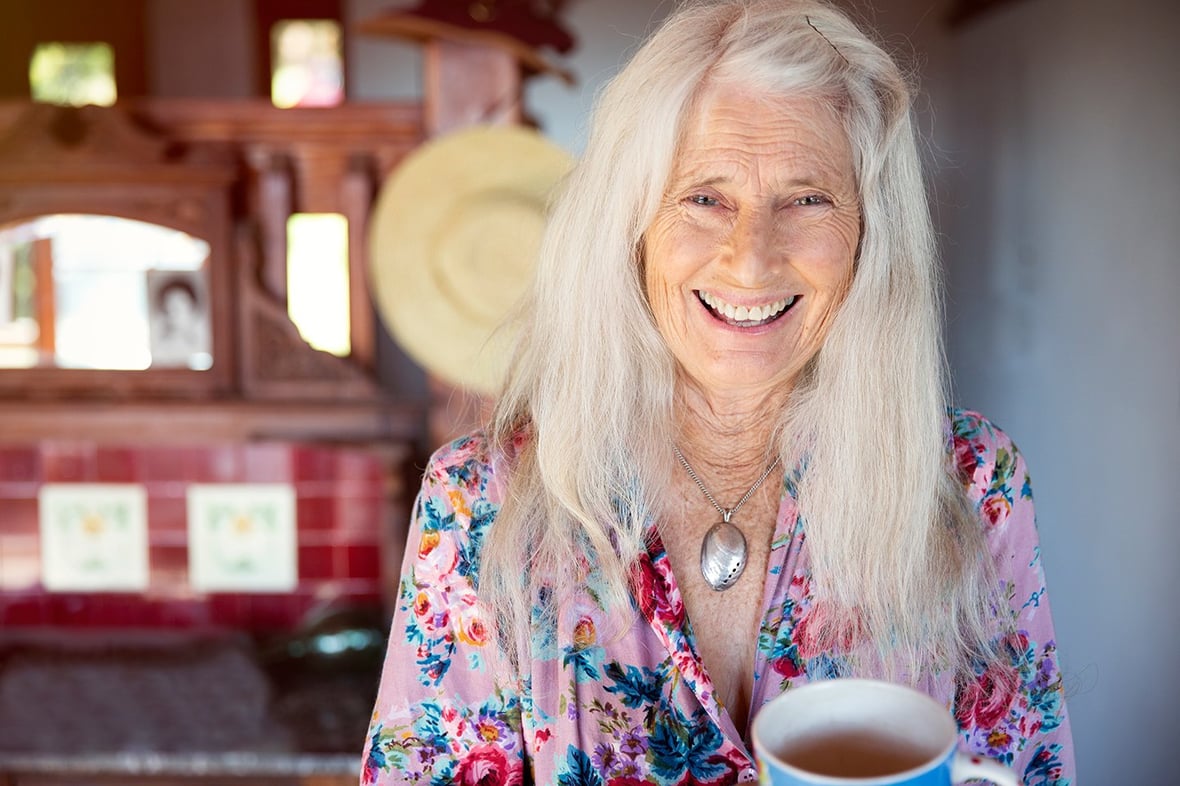
How to Use Realistic Photos of Seniors in Healthcare Marketing
January 13, 2021
Guest author Thomas Sanders is a photographer, author, filmmaker, and professor focusing on senior marketing.
I once did a senior stock photoshoot on a 92-year-old who rode his bike 150 miles a week around the winding roads of Sonoma County. Another memorable photo shoot was of a 111-year-old who wrote 12 published books, starting at the age of 70 years old!
When you have 40 more years to look forward to at 70 years old, you can do a lot with your life if you choose to. These are the types of seniors who you want to represent when buying stock photos of seniors: seniors who are authentic, and it shines through in the photos.
Choosing stock photos of seniors should be an easy process because so many amazing seniors have lived—and are still living—amazing lives. Yet for the most part, seniors are poorly represented in the stock photography industry. I want to help you learn how to find captivating, authentic stock photos of seniors to elevate your company's branding.
The Current State of Senior Stock Photography
I did a quick search of all the major stock photography companies, from cheap to high end, simply using the search word “seniors.”
The images I see mostly do not represent the aging population. There are a number of problems with the search results, including:
- The same senior baby boomer models are used over and over (even on different stock photo websites).
- The photos are incredibly canned.
- There is a huge lack of ethnic diversity.
- Some of the photos are very outdated.
- The seniors are much too young looking, which creates a lack of authenticity.
This is mind-boggling to me, because according to the United Nations, one-seventh of the world’s population is currently over the age of 60 years old. Why are seniors not represented more accurately in marketing when almost 15 percent of the population is seniors? Fifteen percent is a huge percentage of our population!
We see a lot of the exact same stock photos used by companies. The photos are widely used because companies might be paying for cheap stock photos (meaning under $50 a photo, or via a very cheap photo stock subscription), and they are not willing to spend the extra money. Or, when there are good quality senior stock photos, lots of companies are buying them because they are so good.
Authenticity in Quality Senior Stock Photography
When I say “aged senior,” I mean someone over the age of 80 years old. It is the aged seniors who bring more authenticity to companies’ branding.
Of course, we all have a somewhat subjective view on what someone over the age of 80 years old should look like. I would say most of us expect someone over the age of 80 years to have a good amount of wrinkles and maybe some age spots, they are likely wearing glasses, and they are sporting grey hair. These are the seniors more companies need to represent in their marketing, and the images do exist.
Since I have been creating films, books, and photo shoots for the healthcare and financial industries on the subject of seniors for over 16 years, I am conscious of and have access to real aged seniors for stock photos. My company Senior Stock Photos represents the aging population by mostly photographing lively seniors—who are not models—over the age of 75 and including ethnic diversity. We have photos of real seniors doing fitness, activities, and hobbies; spending time with caretakers; using technology; and so much more.
The Cost of Quality: Royalty Free vs. Rights Managed
There are “royalty free” and “rights managed” photo prices. When a company buys a royalty free photo, it means that the company can use the image in perpetuity. Royalty free photos are cheaper than rights managed photos, providing a high-quality stock photo that represents seniors accurately and tells a rich story. A royalty free photo should cost anywhere between $100-$400 for one photo.
Rights managed means a company has the option to buy a photo that the stock photo company will then pull off of their website, so no other company can use the photo for an extended period of time. Rights managed photos cost more than royalty free ones, and they range anywhere from $500 to tens of thousands of dollars, depending on how the photo will be used, for what length of time, and in which forms of media. I would say, on average, when a company buys a rights managed photo from me, it usually costs around $1,500 and up, for just one photo.
This cost might sound crazy to some people, but think about the cost of doing an actual photo shoot. I do films and photo shoots all the time for major corporations nationwide, and the bare minimum (and I mean bare minimum) I charge for my day ray rate, equipment, and one photo assistant (this does not include travel) is around $7,000. Paying extra for a stock photo goes a long way.
Quick Stock Photography Selection Tips
Here are my top tips for choosing authentic, captivating, and good quality senior stock photos:
- Make sure the age of the seniors in your photos represent the correct age demographic as best you can.
- Have ethnically diverse seniors when possible.
- If choosing an interior photo of a happy senior, make sure there is a window in the image. Having a window in the images adds to the feeling of openness and space.
- Try to choose a senior photo that has an underlying real story when possible. For instance, if you're photographing a senior doing a hobby like painting, make sure the model is a real painter, because it will bring more truth to your branding.
- Remember, with reputable stock photo companies you usually have the option to pay more for a rights managed photo, so only your company can use the photo for an extended period of time. It is kind of like renting a photo, and it ensures the photo is unique to the company's branding.

About the author
Thomas Sanders is a photographer, author, filmmaker, and professor focusing on the topics of marketing seniors and healthy longevity. Read more articles by Thomas Sanders.





















